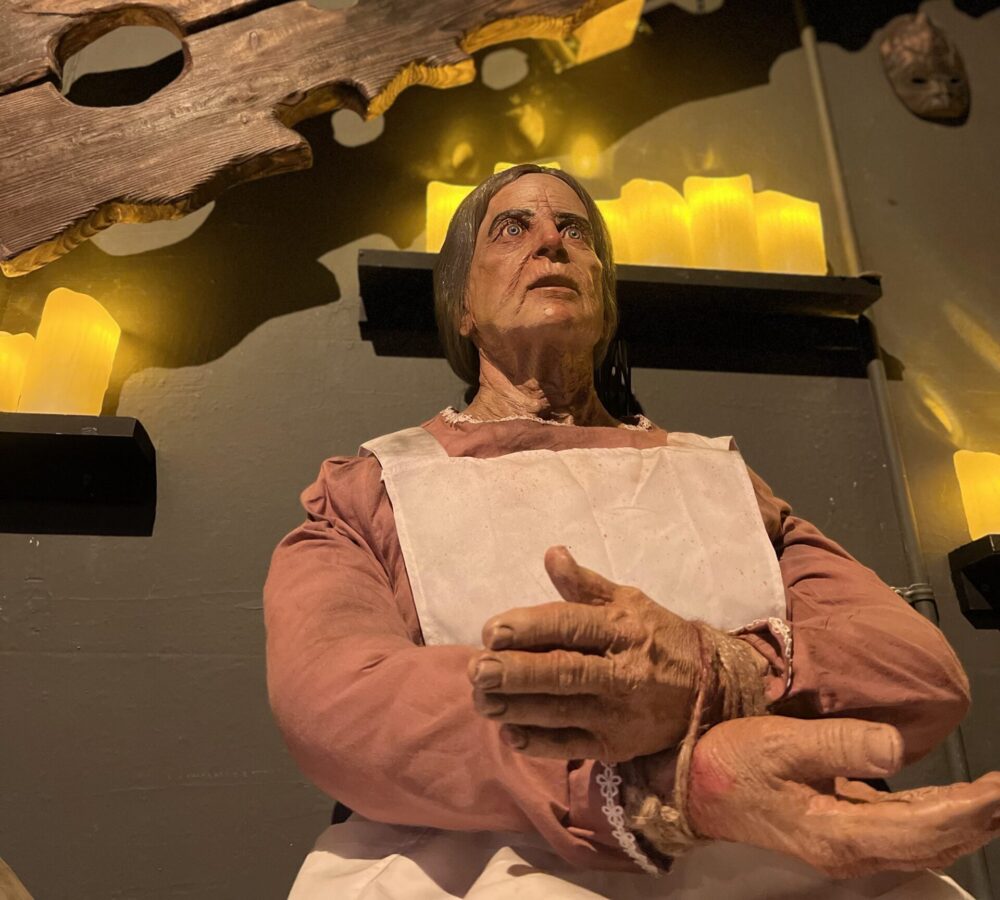Welcome to a journey into the chilling and fascinating world of medieval times! The Medieval Torture Museum is no ordinary interactive museum; it’s a unique attraction designed to immerse visitors in a realm of medieval torture chambers, ancient tools, and grim practices of justice from a distant past. Whether you’re a fan of dark tourism or simply looking for an unforgettable way to explore what to do in Chicago, this museum experience offers an intense and educational look at medieval history.
Entering a World of Medieval Torture
From the moment you step through the museum’s doors, the atmosphere takes you back to medieval Europe, where fearsome devices and torture methods were used as tools of justice. Located in Chicago, the Medieval Torture Museum in Chicago offers a unique look at punishment practices, shedding light on an era that was as brutal as it was intriguing. You’ll encounter medieval artifacts and exhibits that are carefully curated to provide a genuine experience of medieval history.
What You’ll Discover in the Museum
Inside, the interactive museum layout is designed to take you on a self-guided tour that reveals each exhibit’s unique purpose and role in historical reenactments. The museum offers opportunities to explore authentic torture chambers, complete with chilling devices once used to enforce confessions and punishments. The combination of historical facts, immersive settings, and realistic displays makes it a premier choice among unique tourist attractions in Chicago.
For those looking to explore beyond Chicago, there’s also the Medieval Torture Museum in LA, offering a similarly captivating experience. Each location provides a slightly different journey, with exhibits tailored to reflect various aspects of medieval times and ancient punishments.
Immerse Yourself in Interactive and Immersive Experiences
If you’re fascinated by hands-on experiences, this museum will not disappoint. The immersive museum experiences here are designed for those who seek to go beyond traditional displays. You can explore lifelike dummies and settings that are created with astounding detail. Each torture chamber provides an eerie backdrop that stirs curiosity and encourages deep exploration.
For those planning a trip to St. Augustine, the Medieval Torture Museum in St Augustine offers yet another chance to step into this world of historic mysteries and artifacts. Both Chicago and St. Augustine locations feature interactive exhibits that make it easy to lose yourself in the horror and intrigue of medieval justice.
Uncovering the Dark Side of Medieval History
This museum is dedicated to exploring an often-overlooked aspect of medieval history: the brutal methods of punishment that were justified under the guise of maintaining order. You’ll see exhibits like the Iron Maiden, the rack, and other devices designed to evoke fear and extract confessions. This journey into history unveils how societies have evolved over centuries, leaving behind practices that may seem unthinkable today.
The museum guide available at the entrance is essential for those who want a deeper understanding of each exhibit. This guide provides historical context, detailing how each device was used and explaining the beliefs and fears that justified such practices. It’s an invaluable companion for those wanting a truly immersive museum experience.
The Thrills of Dark Tourism: Why This Museum Stands Out
As a significant destination in the dark tourism landscape, the Medieval Torture Museum attracts history buffs, curious visitors, and dark tourism enthusiasts alike. Visitors are often intrigued by the journey into human psychology and the societal structures of the past that allowed such harsh punishments to be institutionalized. It’s not only a chance to witness historical reenactments of these medieval practices but also a window into the medieval mindset itself.
If you’re seeking inspiration for what to do in Chicago that strays from the usual tourist paths, this museum offers an experience you’ll remember long after you leave. Not only is it a unique tourist attraction, but it also provides deep historical insights that make it a meaningful and educational visit.
A Spooky Seasonal Experience: Halloween in Chicago
One of the best times to visit is during Halloween. The Halloween in Chicago Medieval Torture Museum event heightens the thrill with special displays, actors, and other eerie attractions that make the experience even more chilling. Whether you’re a dark tourism fan or simply in search of an extraordinary Halloween experience, this event will surely leave a lasting impression.
Curiosity and Exploration in Every Exhibit
The Medieval Torture Museum is more than just an exhibit; it’s a chance for visitors to step back in time and witness the reality of medieval punishments. Each section of the museum is designed to stimulate curiosity and invite exploration. With detailed descriptions and realistic portrayals, every exhibit stands as a testament to how far society has come from those harsh practices.
If you’re in Chicago, don’t miss the opportunity to explore this one-of-a-kind attraction. For those who want to experience the medieval atmosphere in a different setting, the Medieval Torture Museum in LA or St Augustine may be closer options, each offering unique insights into the grim reality of historical justice.
Final Thoughts: A Journey Through Medieval Times
In summary, the Medieval Torture Museum is a must-see for anyone fascinated by history, psychology, or the darker sides of human experience. The exhibits don’t just tell the story of medieval artifacts; they bring you into an era of harsh justice and fear-driven punishment. With locations across major U.S. cities, this museum offers something for every curious traveler seeking a unique experience.
Whether you’re visiting for Halloween or simply exploring what to do in Chicago, this museum promises an unforgettable journey into medieval times. Through each exhibit, you’ll come to understand the mindset that justified such devices, leaving with both chills and newfound respect for historical progress.






